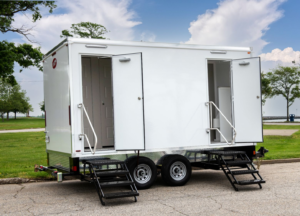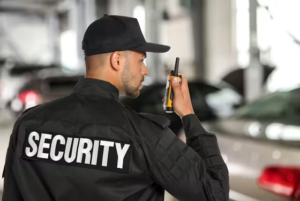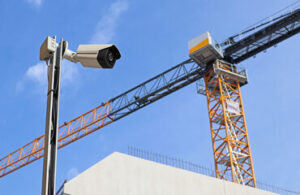It’s important to understand that there is not one single training method that is “right” all the time. Knowing this can help you sort out knowledgeable trainers from rookies.

Positive reinforcement means adding something to make it more likely that a dog performs a desired behavior. Negative punishment, on the other hand, is taking something away to reduce the likelihood that a dog performs a undesirable behavior. Read on Sierra Canine for more details.
Puppy training is an important part of your puppy’s early development, and helps to set the foundation for a well-mannered dog throughout their life. While it may take time and dedication, training your puppy is a rewarding experience that will strengthen the bond between you and your pet.
The most effective methods of puppy training incorporate positive reinforcement and a consistent approach. Praise and treats are used to reinforce good behavior, and the clicker is an excellent tool for marking precise moments of desired behavior. By consistently using these tools and providing your puppy with rewards, they will begin to associate the sound of the clicker with the reward they receive, speeding up learning and making the process more efficient.
It’s also important to be consistent with your puppy’s basic cues, such as “sit,” “stay,” and “come.” By offering a clear command in a consistent manner, you can train them to respond reliably. Training sessions should be short but enjoyable, and should always end on a positive note.
Puppies have a limited attention span, so it’s best to keep training sessions to about five to ten minutes per day. This will help them retain what they learn, and ensure that every training session is a positive experience for them.
Enroll your puppy in puppy socialization classes or arrange playdates with other dogs to help them become comfortable and confident in a variety of environments, people, and situations. This is important to prevent fear-based aggression in adulthood, and will also help them develop social skills and learn canine body language.
Some owners may employ dominance-based techniques such as alpha rolls and physical corrections like leash jerks, but these have been shown to be ineffective and can even lead to fear or aggression in dogs. It is recommended to seek the guidance of a professional dog trainer or behaviorist for more effective techniques.
Basic Training
Most training classes start with basic obedience. This is a great way for owners to get familiar with the training environment and to start to build a relationship with their dog.
In the beginning, it’s important that your dog understands and is reliably responding to each command. A reliable name response (looking at you when you say your dog’s name), loose leash walking, down and stay are fundamental to any well behaved dog. Reliable recall is also very important for safety and enrichment, as well as giving your dog off-leash freedom.
Some trainers use a method called classical conditioning to teach dogs these basic skills. The concept is simple. Pavlov rang a bell before dispensing food and noticed that the dogs salivated at the sound of the bell even though no food was yet present. The bell had become a conditioned stimulus.
Other trainers have moved away from using force to train dogs, instead using positive reinforcement and a system called The Quadrant to encourage behaviors. Positive reinforcement includes verbal praise and play, as well as food rewards. In contrast, punishment is removing something your dog enjoys when they break a behavior such as the example above: you say sit, your dog sits, then gets back up and starts barking at squirrels or the neighbor’s cat. You would stop petting your dog if they broke their sit and help them back into a sit with a few collar taps (negative punishment).
There is a group of professionals who fall in between the two camps. They generally use the philosophy of LIMA (least intrusive, minimally aversive). These trainers try to meet the dog and owner where they are at in their training journey and help them learn.
Regardless of which type of training you choose, it is important to make your sessions short and frequent. Dogs have short attention spans and they can quickly become bored with repetition. A good rule of thumb is to work with your dog for 10 – 15 minutes, 2-3 times per day. This allows you to reinforce the behaviors without becoming frustrated or overwhelmed.
Trick Training
Dog tricks are more than just fun. They can help us train our dogs to listen for our cues even when there are distractions like people and other animals around them. This is important for safety during walking near crowded areas or busy streets. Having your dog focus on you and ignore other stimuli helps keep them safe while on walks. The ability to perform tricks also shows that your dog has learned how to listen for verbal commands, which will make them easier to train.
While trick training used to be considered indulgent fun, it has gained a lot of respect in recent years as more people realize that they can teach their dogs some amazing things. It has even become a competitive dog sport known as Freestyle in which people dance with their dogs to music using a series of tricks.
When teaching a new behavior, it is best to use positive reinforcement as much as possible, such as rewarding with a treat. However, if your dog isn’t as motivated by food treats you can reward them with other things they enjoy such as petting or short play sessions. Using different things for rewards is called intermittent reinforcement and can increase the duration of the behavior your dog will display.
During training it is important to remain calm and focused on what you are trying to teach your dog. If you get frustrated it may make the dog feel anxious or even cause them to shut down and not learn. It is also important to keep training sessions short. If you have a long training session your dog may lose interest and start to get tired. This can interfere with the learning process and cause them to forget what they have learned.
Recall training, also known as “come when called”, is an essential behavior for your dog to know. It can help keep them safe and make it easier for you to take them on adventures, such as hikes or outings to the dog park. If you haven’t already taught your dog this behavior it is recommended that you do so as soon as possible.
Enrichment
If you have a dog who can’t leave the kitchen counter or who is constantly sniffing, chewing, licking or shredding things around the house, it may be time to consider enrichment training. Enrichment training allows a dog to engage in innate behaviours such as hunting, sniffing, digging, foraging, chasing and playing all in safe, controlled environments. These activities will allow a dog to burn off energy, improve their cognitive skills and build confidence in new and challenging situations.
In addition, enrichment plays an important role in reducing anxiety and reactivity, as it often addresses the root cause of these undesirable behaviors which is emotional dysregulation. When a dog is feeling anxious or reactive they are not processing the information around them in a rational way, and therefore their body is preparing for battle or flight, which takes a lot of physical and mental energy to do. In order to help regulate their emotions, dogs need to be able to release that excess energy through acceptable outlets, such as sniffing, chewing or playing.
When dogs do not have any acceptable outlets to release their energy, they can end up engaging in more problematic behaviors such as barking and lunging which can be a threat to people or other animals. This is why enrichment training is so crucial to raising a well-mannered, happy and confident dog.
While many people believe that simply walking their dog is enough to satisfy their dog’s enrichment needs, it is not. Walks are not about putting one adorable paw in front of the other – they’re about a dog being able to sniff all the smells, watch all the people and other dogs, cats and birds, feel all the textures, hear all the sounds and see all the colours. In fact, if a dog gets too bored with their environment and cannot satisfy their enrichment needs through food, they will likely start to act out by chasing fast moving cars or barking at strangers on the street. This is why we have to make sure we provide plenty of other ways for dogs to fulfil their enrichment needs and keep them challenged at all times.






